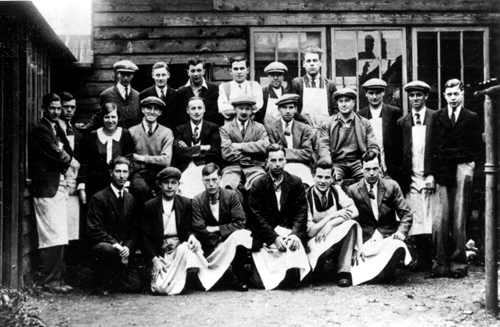
United Woodworking Company Workforce in about 1936
Our latest library exhibition is running now until mid-August 2025 in the Wychwoods Library in Milton. We feature a selection of images of Wychwoods men at their labours in all kinds of occupations. As with all our exhibitions in the library, these images have been selected from donations over time to our archive.
Here are some examples
Work in the Wychwoods
The nature of employment in the Wychwood villages has shifted significantly over time. Traditionally, most villagers worked locally in agriculture, wood-based trades, domestic service, railways, schools, and self-employed roles like cobbler, blacksmith, or chimney sweep. Agriculture continues of course, but mechanisation has reduced manpower needs. From the 1960s, many of these other jobs have largely disappeared, replaced by roles aligned with modern life—such as work involving computers, electronics, pet care, and part-time domestic services (e.g., cleaners, gardeners, home-helps), now often serving private homes, schools, and care facilities rather than large estates.
Building firms have moved from direct to contract labour, resulting in more self-employed tradespeople. There has also been growth in the transport and catering sectors.
In addition to these changes over time, there has been a major increase in remote work, with residents running businesses from home thanks to digital connectivity.
Read on for selected articles on business, trades and industry in the Wychwoods






















